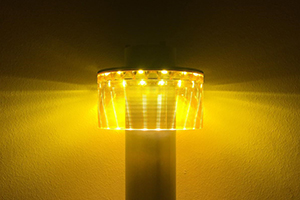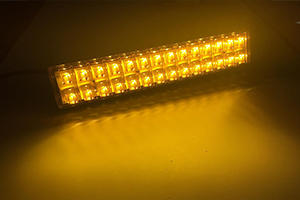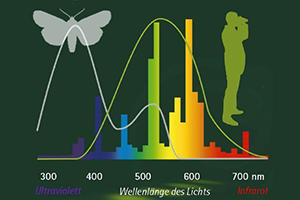Amber LED Lighting
Sensitive areas in outdoor lighting that are about increased safety, ecology or quality of life deserve our particular attention. The right choice of light color plays a crucial role here. Amber LED lighting offers clear advantages over cold white light in certain areas:
1) illuminate conflict zones:
The yellow amber light may have conflict zones, e.g. Pedestrian crossings, highlighting in color. This creates security as the road users are automatically alerted to the conflict zone. The increased attention reduces the risk of a possible accident.
2) Shape the city with Amber LED light:
The chosen light color influences the appearance of the illuminated material. Thus, the appearance of materiality can be positively or negatively influenced. Amber-colored light, for example, is ideal for illuminating buildings with a brick or stone facade, because the warm light color highlights the warm tone of the facade.
Due to the conversion to LED, a different light image is created, residents feel in rare cases disturbed by the new lighting. Municipalities that value a visually similar light image, the use of LED lights with amber-colored light offers a good alternative to high-pressure sodium and low-pressure lamp.
3) Ensure safety
Amber light is much less diffused in fog than white light with a high blue content. Better visibility and thus higher safety are the result. This is a decisive advantage in the lighting of port facilities, container terminals, loading stations, locks in inland navigation, etc., which must ensure safe operation night after night and in any weather.
4) Insect-friendly light:
The greatest brightness perception of nocturnal insects lies outside of the human visible light spectrum in the UV range (<400 nm) and extends into the blue (450 nm) and green range (550 nm). Light sources that emit light in this area therefore have greater suitability for the approach of these insect species. The insects are attracted to the artificial light and lose their natural orientation. What ultimately leads to the death of insects are two things. On the one hand the exhaustion due to the disoriented flight around and on the lamp and secondly, the possibility of getting into inadequately sealed housings in the interior of the lamp and there to come into contact with the hot light source.
LUNUX Amber Light Solutions (similiar to 2,200 K): 90% of the emitted light is outside the visible range for insects. Insects are thus hardly attracted to the artificial light source. In areas that are particularly worthy of protection, such as in nature or national parks, or in the vicinity of water (ship locks), it makes sense to use them.



